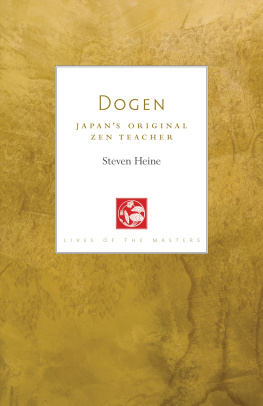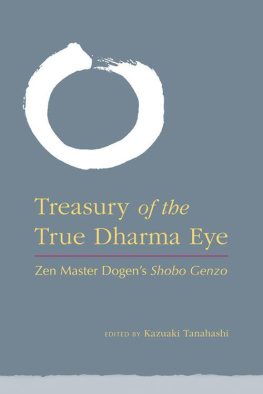Dōgen - Dōgens manuals of Zen meditation
Here you can read online Dōgen - Dōgens manuals of Zen meditation full text of the book (entire story) in english for free. Download pdf and epub, get meaning, cover and reviews about this ebook. City: Berkeley, year: 1988, publisher: University of California Press, genre: Religion. Description of the work, (preface) as well as reviews are available. Best literature library LitArk.com created for fans of good reading and offers a wide selection of genres:
Romance novel
Science fiction
Adventure
Detective
Science
History
Home and family
Prose
Art
Politics
Computer
Non-fiction
Religion
Business
Children
Humor
Choose a favorite category and find really read worthwhile books. Enjoy immersion in the world of imagination, feel the emotions of the characters or learn something new for yourself, make an fascinating discovery.

- Book:Dōgens manuals of Zen meditation
- Author:
- Publisher:University of California Press
- Genre:
- Year:1988
- City:Berkeley
- Rating:4 / 5
- Favourites:Add to favourites
- Your mark:
- 80
- 1
- 2
- 3
- 4
- 5
Dōgens manuals of Zen meditation: summary, description and annotation
We offer to read an annotation, description, summary or preface (depends on what the author of the book "Dōgens manuals of Zen meditation" wrote himself). If you haven't found the necessary information about the book — write in the comments, we will try to find it.
Dōgen: author's other books
Who wrote Dōgens manuals of Zen meditation? Find out the surname, the name of the author of the book and a list of all author's works by series.
Dōgens manuals of Zen meditation — read online for free the complete book (whole text) full work
Below is the text of the book, divided by pages. System saving the place of the last page read, allows you to conveniently read the book "Dōgens manuals of Zen meditation" online for free, without having to search again every time where you left off. Put a bookmark, and you can go to the page where you finished reading at any time.
Font size:
Interval:
Bookmark:
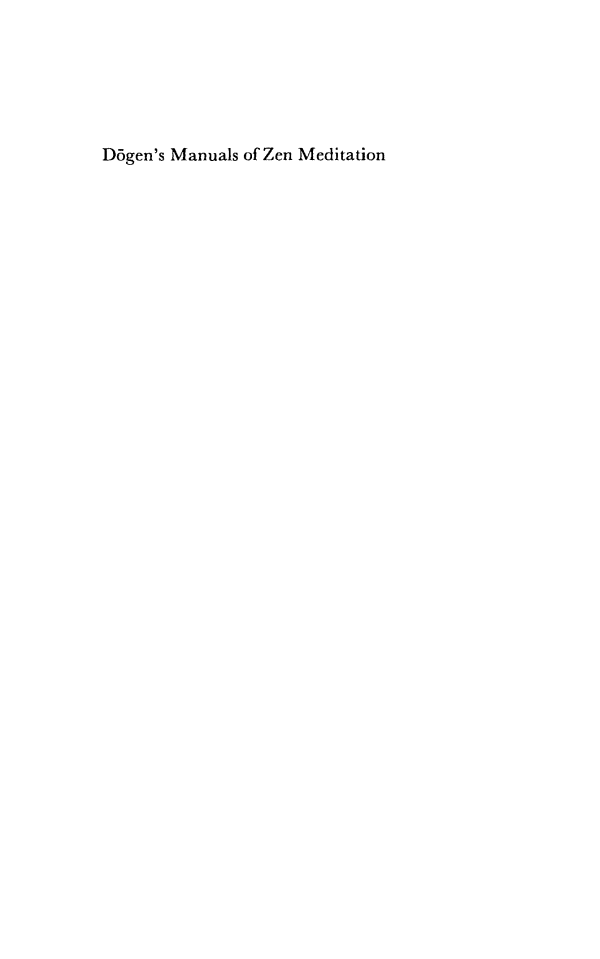
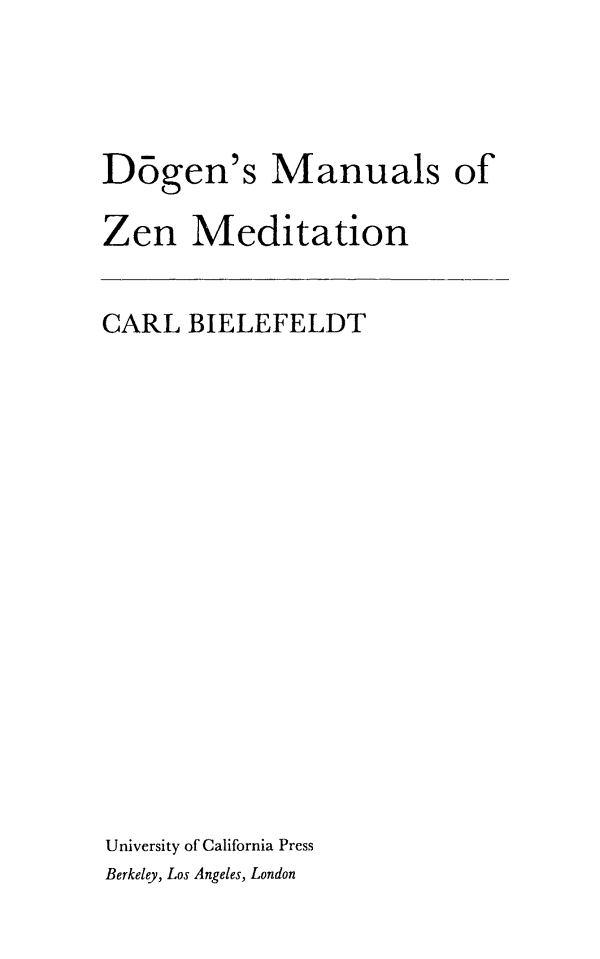
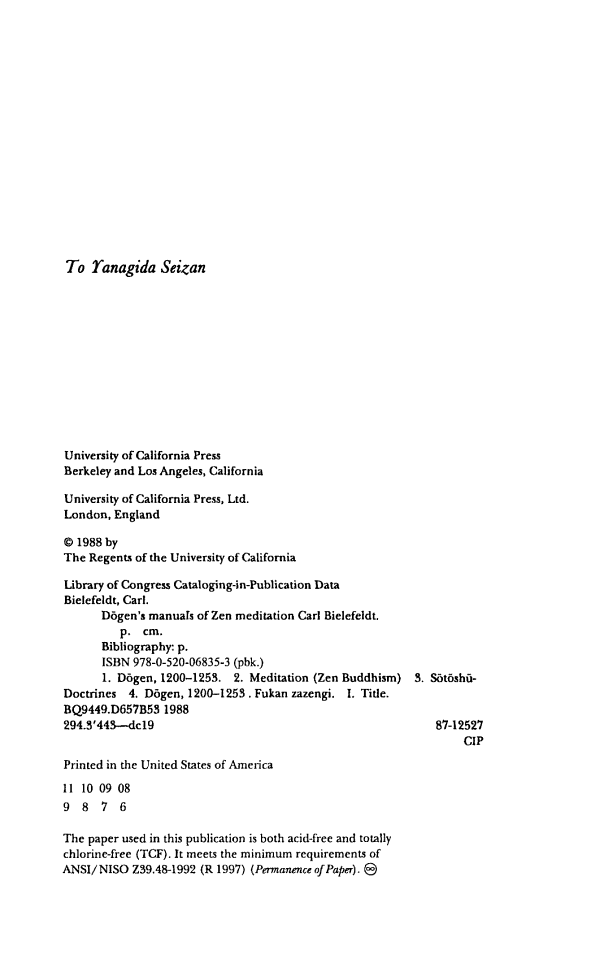
Acknowledgments
I should like to thank the Japan Foundation and the Social Science Research Council for grants in support of the initial research for this work; the Center for Japanese Studies, University of California, Berkeley, and the Center for Research in International Studies, Stanford University, for support of the writing; Professors Kajiyama Yuichi and Yanagida Seizan, of Kyoto University, for assistance during the initial research; and the Kuroda Institute and the University of Hawaii Press for permission to reprint here a revised version of my article "Ch'ang-lu Tsung-tse and the 'Secret' of Zen Meditation."
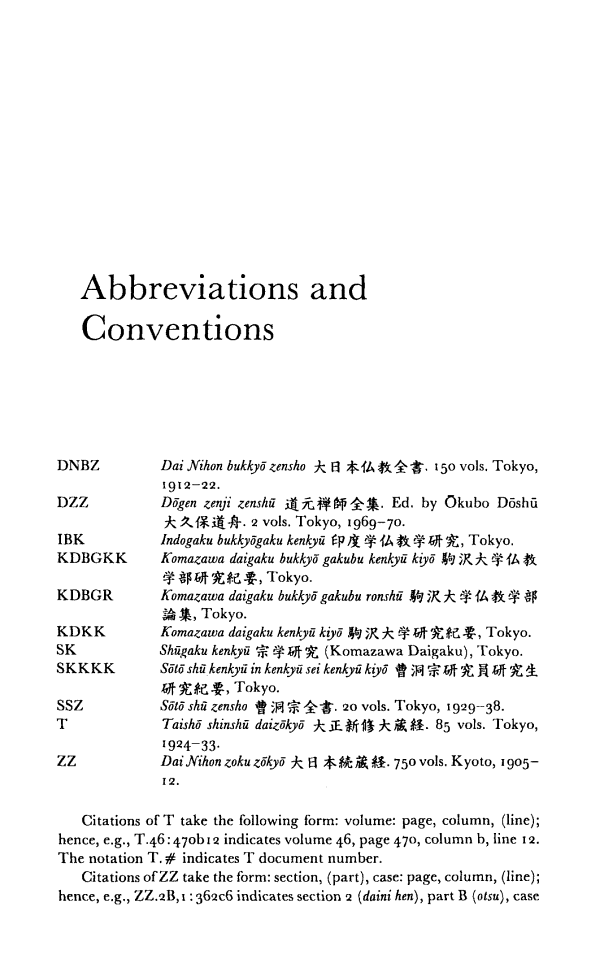
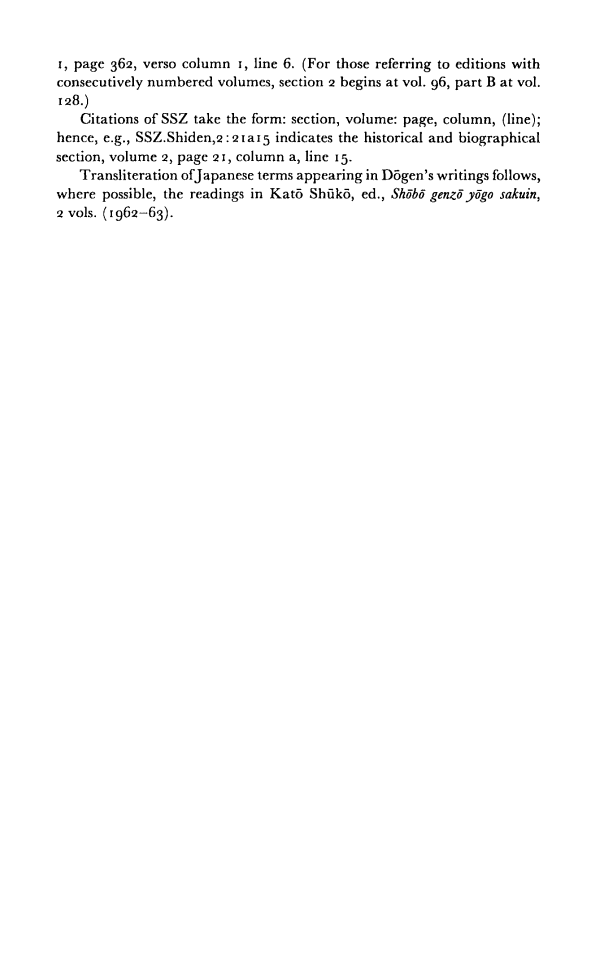
Introduction
The Zen school is the Meditation school, and the character of Zen can be traced in the tradition of its meditation teaching. Historians have shown us that the origins of the school in China are considerably later and more complicated than the traditional account of the lineage of Bodhidharma would have it and that the early history of the school is in fact a history of the teachings and traditions of several Buddhist meditation communities of the seventh and eighth centuries. If the masters of these communities did not yet see themselves as members of a Ch'an, or Meditation, school, and ifas is clear from their own reportsthey did not always agree on their interpretations of Buddhism, still they were bound together by a common concern for the immediate, personal experience of enlightenment and liberation and, hence, by a common emphasis on the cultivation of spiritual techniques conducive to that experience. To this extent they may be spoken of as participants in a single reform movement, which sought to cut through the scholastic elaborations of the medieval Chinese Buddhist church and to translate the yogic traditions of north China into a popular modern idiom acceptable to the T'ang Buddhist community.
By the end of the eighth century the Ch'an reformation had established itself as a distinct Buddhist school, complete with its own history, literature, and dogma. Nevertheless, the emphasis on practice and immediate experience remained a hallmark of the faith. Indeed some scholars have held that it was precisely this emphasis that allowed the school to weather the persecutions of the late T'ang and emerge as the sole surviving form of Chinese monastic Buddhism. On several counts such a view is probably overdrawn; but, if the number of Ch'an books from the late T'ang and Sung suggests that there was considerably more to Ch'an religion in those days than simply "seeing one's nature and becoming a Buddha," there is much in the content of these books to indicate that the ground of the religion continued to be the meditation hall and the daily round of the monastic routine.
Again, historians may rightly question the common claim that it was the school's practical bent and ascetic rigor that account for the subsequent adoption of Zen by the medieval Japanese warrior class; but there is no need to doubt that, quite apart from its obvious cultural appeal as the dominant form of Sung Buddhism, the Ch'an traditions of monastic discipline and meditation practice made the religion an attractive option for those in the spiritual turmoil of Kamakura Japan who sought concrete means to the direct experience of Buddhist enlightenment. Even today in the midst of our own turmoil these same traditions continue to characterize the school and attract adherents both in Japan and abroad.
Given the centrality of meditation to the school, it is hardly surprising that the interpretation of the practice should have formed a majorperhaps the majorissue of Ch'an and Zen doctrine, and that when the school has bothered to argue over doctrine, it has tended to do so in terms of this issue. We may recall that the most famous such argument, that between the "Northern" and "Southern" factions of the eighth century, revolved around the supposed differences between two accounts of the meditative path one describing a "gradual" mental cultivation, the other emphasizing a "sudden" spiritual insight. Again, in the twelfth century, the well-known dispute between the Lin-chi and Ts'ao-tung houses of Ch'an was cast in terms of two competing meditation stylesone recommending the investigation of the hua-l'ou, or kung-an, the other advocating something known as "silent illumination" (mo-chao). This latter dispute was carried over to Japan, where to this day it remainsalbeit in somewhat altered formsthe primary ideological rationale for the separation of the two major Japanese schools of Rinzai and Soto.
Throughout the long and sometimes stormy history of Ch'an and Zen meditation teaching, probably no single figure has been more closely identified with the practice than the Zen master Dogen (12001253), a pioneer in the introduction of the religion to Japan and the founder of what is today the largest of its institutions, the Soto school. For Dogen, seated meditation, or zazen, was the very essence of the Buddhist religionwhat he called "the treasury of the eye of the true dharma" {shobo genzo) realized by all the Buddhas and handed down by all the Patriarchs of India and China. The practice of this zazen was not simply an important aid to, nor even a necessary condition for, enlightenment and liberation; it was in itself sufficient: it was enough, as he said, "just to sit" {shikan taza), without resort to the myriad subsidiary exercises of Buddhist spiritual life. Indeed (at least when rightly practiced) zazen was itself enlightenment and liberation: it was the ultimate cognition, the state he called "nonthinking" {hi shiryo) that revealed the final reality of things; it was the mystic apotheosis, "the slough ing off of body and mind" (shinjin datsuraku), as he said, that released man into this reality. Such practice then (at least when rightly understood) was its own end, as much the expression as it was the cause of transcendence: it was "practice based on enlightenment" (shojo no shu); it was the activity of Buddhahood itself (butsugyd) . As such, this was, ultimately speaking, no mere human exercise: it was participation in the primordial ascesis {gyoji) of being itself, that which brought forth matter and mind, heaven and earth, the sun, moon, stars, and constellations.
Few Buddhists, whether of the Zen or other persuasions, would disagree with D5gen that, since the days of Sakyamuni, meditation has been, in one form or another, a core element of the religionthough most might question whether it is in itself sufficient to gain the final religious goal. Few Zen Buddhists, whether of the Soto or other denominations, would be surprised by Dogen's claim that (at least when rightly understood) the practice of Zen is itself the direct realization of the enlightened Buddha mind within us all, but many would doubt that the meaning of this claim is best interpreted through the concrete exercise of seated meditation. Dogen was not unaware of these questions and doubts. The true vision of the shobo genzo, he held, was always the minority view, handed down in each generation through a unique line of transmission (tanden) from Sakyamuni and preserved in his own day only in the person of his Chinese master, the Ts'ao-tung teacher T'ien-t'ung Ju-ching (i 163-1228). As for the restthe benighted adepts of the Hinayana, the word-counting scholars of the Mahayana, and the self-styled masters of the other houses of Ch'an (especially of the Lin-chi house that had come to dominate Sung China)they blasphemed zazen or paid it lip service without real understanding or authentic practice.
Font size:
Interval:
Bookmark:
Similar books «Dōgens manuals of Zen meditation»
Look at similar books to Dōgens manuals of Zen meditation. We have selected literature similar in name and meaning in the hope of providing readers with more options to find new, interesting, not yet read works.
Discussion, reviews of the book Dōgens manuals of Zen meditation and just readers' own opinions. Leave your comments, write what you think about the work, its meaning or the main characters. Specify what exactly you liked and what you didn't like, and why you think so.


